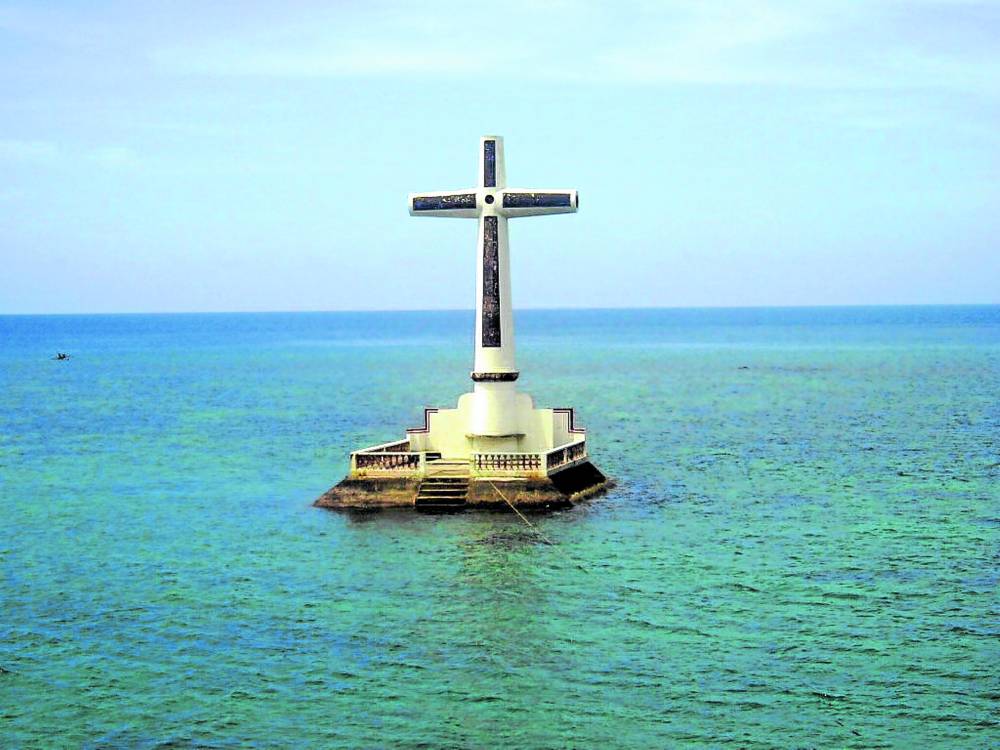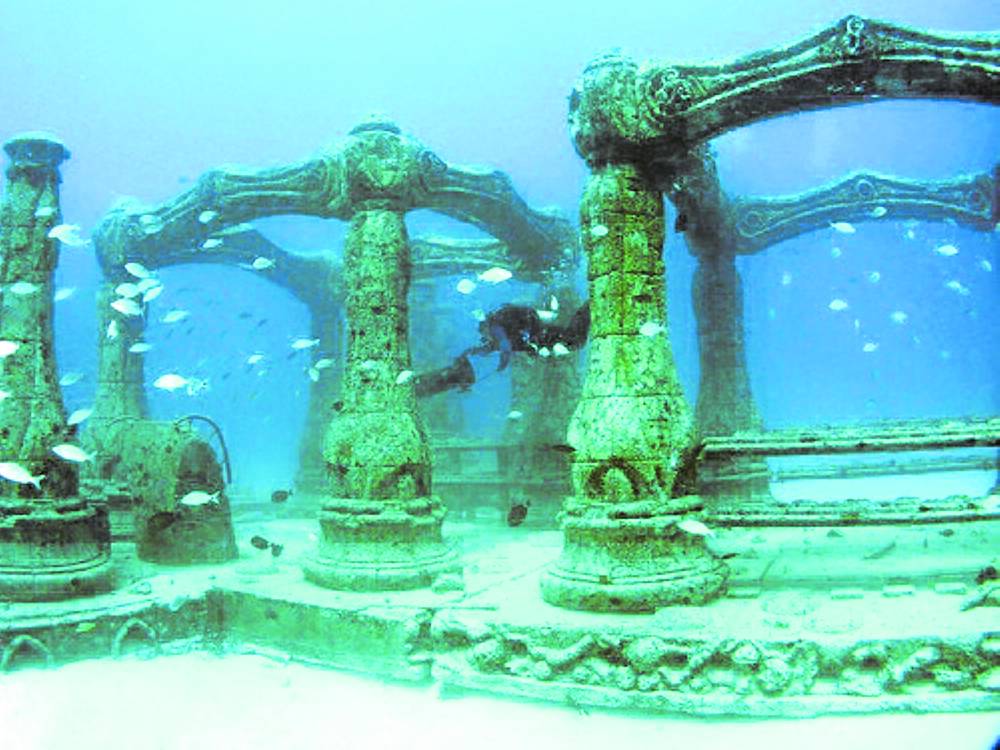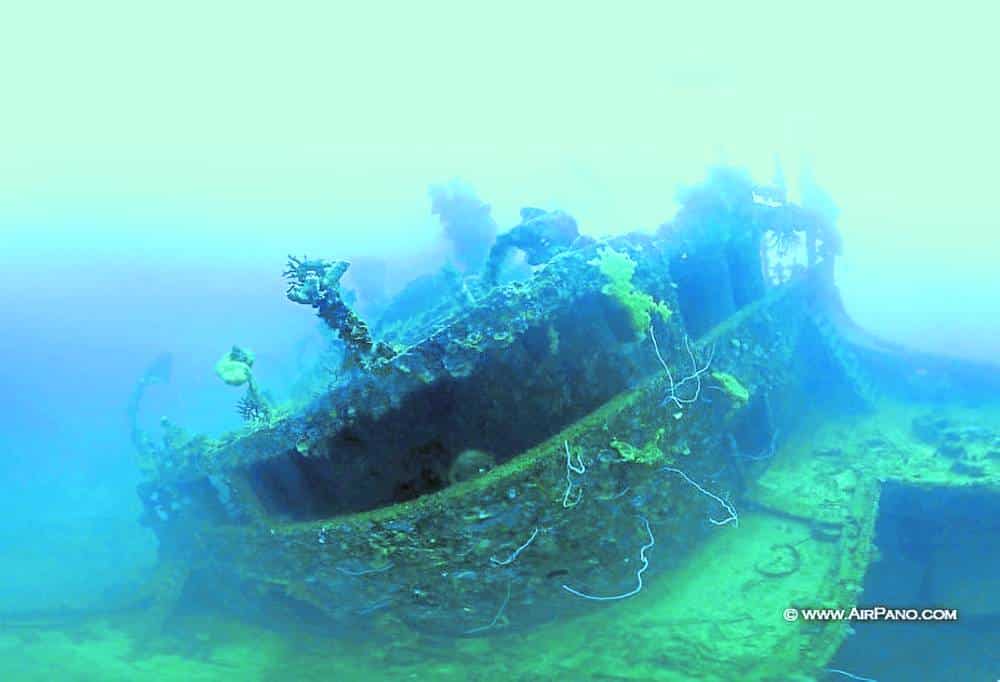Resting in the depths: Exploring underwater cemeteries
Cemeteries carry a haunting, mystical energy.
As resting places for lives once lived, they exude a solemn ambiance. Yet, some cemeteries are particularly unique—not for being on land, but for existing under water. Some were shaped by nature’s hand, while others were intentionally crafted by human ingenuity. Here are some of them.
Sunken Cemetery
Philippines
The famous Sunken Cemetery in Catarman, Camiguin used to be a graveyard above the sea. It was originally a Spanish-era cemetery in the town but after the eruption of Mt. Vulcan in 1870, it was destroyed and its remnants were plunged under water.
A place of reverence and reflection, the site is accessible by boat. The Sunken Cemetery is marked by a huge concrete cross that serves as a commemorative marker for those who lost their lives, and the Walkway to the Old Volcano (Vulcan Daan), a stone staircase with 15 Stations of the Cross.
In 2018, the Sunken Cemetery was declared a National Cultural Treasure by the National Museum of the Philippines. It remains a popular and unique tourist destination in Camiguin owing to its mystical value, its beautiful views especially during sunset, and its reputation as a great diving site.
Article continues after this advertisementNeptune Memorial Reef
United States
Article continues after this advertisementThe Neptune Memorial Reef is an underwater cemetery that was intentionally built to be one. It is an artificial reef located off the coast of Key Biscayne near Miami, Florida. Built as an artistic interpretation of the Lost City of Atlantis, the Neptune Memorial Reef operates as a resting place for those who choose cremation and want to be memorialized in a unique underwater setting.
This eco-friendly memorial site started operations in 2007. Aside from being a cemetery, this undersea art is also popular among recreational scuba divers, marine biologists, students, researchers, and ecologists.
As of 2022, the Neptune Memorial Reef is the resting place for the cremated remains of more than 1,000 people. In its full capacity in the future, it will house 250,000 memorial placements as well as thousands of different marine creatures across 16 acres of ocean floor.
Timbulsloko Cemetery
Indonesia
The sad state of the cemetery and the whole village of Timbulsloko in Indonesia is a result of the climate emergency the world is facing.
Over the years, residents of the coastal village of Timbulsloko have drastically suffered because of rising sea levels, coastal erosion, and excessive groundwater extraction that made their land sink. The coastline has also been left vulnerable to floods after locals cut down mangroves for fishing ponds in the 1990s. Residents had to elevate their homes and build walkways to avoid floods.
But it is not only the living that’s being protected from the rising seas. The village cemetery, located just a few hundred yards outside the village, had been submerged even at low tide since 2020. It posed an eerie image with a dead tree in the middle surrounded by dozens of headstones sticking out of the water.
At some point, the village’s cemetery was raised to prevent it from rapidly sinking, with villagers installing a wood fence, nets and tires to keep the waters at bay. Residents have also crowdfunded a boardwalk to connect their houses and give them access to their loved ones’ graves.
Chuuk Lagoon
Micronesia
The Chuuk Lagoon is a large graveyard found underwater. Once an important naval base, it became a massive underwater graveyard after World War II.
The Chuuk Lagoon is an atoll in the Central Pacific and is part of the Chuuk State within Micronesia. Formerly known as Truk Atoll, it was used by Japan as a main naval base in the South Pacific during World War II. It was a shelter for Imperial Japan’s battleships, aircraft carriers, cruisers, destroyers, minesweepers and submarines.
The base was attacked by American forces during a three-day air strike in 1944. Many people died as dozens of warships, planes, tanks, and railroad cars sank to the bottom of the lagoon, where they remain today in what is known as the “Ghost Fleet of Truk Lagoon.”
In 1971, French oceanographer Jacques Cousteau and a team of experts who dived in the area brought the attention of the world back to Chuuk Lagoon and contributed to creating the widespread fascination for the site.
Today, the Lagoon can be visited by history lovers interested in seeing from a different angle the aftermath of World War II and by adventurous divers who want to take a look at a unique environment.
Sources: Inquirer Archives, catarmancamiguin.gov.ph, camiguin.gov.ph, dignitymemorial.com, BBC, Seattle Times, scmp.com, Agence France Presse, nationalgeographic.com, cntraveler.com, express.co.uk


